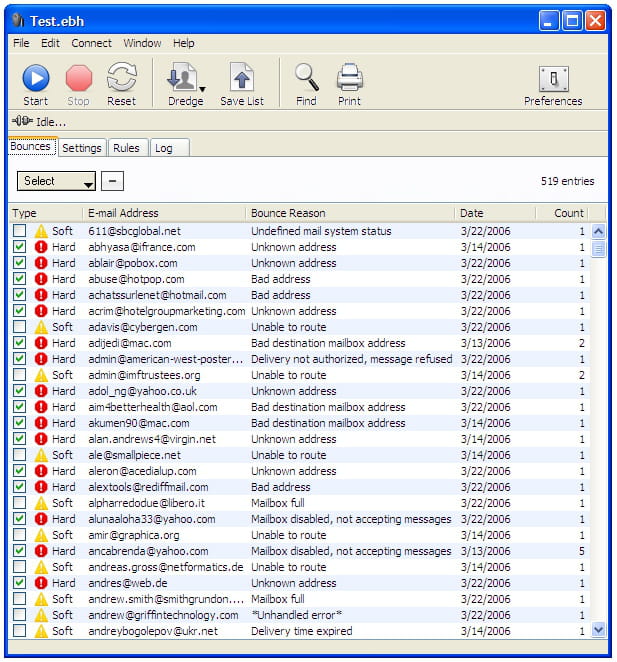

- #EMAIL BOUNCE HANDLER ACTIVATION KEY UPDATE#
- #EMAIL BOUNCE HANDLER ACTIVATION KEY CODE#
Set up a metadata match on a range of IP addresses, and quarantine messages from IP addresses outside of the range.For example, set up an outbound filter that detects the word confidential in outgoing messages. Reject outgoing messages that might contain sensitive company information.This advanced email filtering is called content compliance. Soft bounces and bounce rates in general are a good metric for knowing if your mailing lists are as good as they could be.If you're looking for instructions and guidelines related to legal, security, and compliance concerns, go to Google Workspace legal and compliance.Īs an administrator, you can set up rules to handle messages that contain content that matches one or more expressions. Avoid telltale spam triggers such as: long subject lines, all caps, attachments, embedded images and spam words.Įmail marketing is still a very successful strategy for driving website traffic.This builds trust with both users and email platforms. Always include a prominent and easy to use unsubscribe link in all emails.


Avoid buying mailing lists, cultivate your own from opt-in users.
#EMAIL BOUNCE HANDLER ACTIVATION KEY UPDATE#
Give users the opportunity to update their email addresses during the checkout process. For websites that include user login, give your users the opportunity to manage their accounts, including updating their email. Test your messages on all the major email servers before sending them to your list - you can discover beforehand whether the message is too large or gets automatically shunted into spam. Replies are certain to originate from a correct address and will add your address to a user's white list. When a user first signs up for your mailing list, send a confirmation email which includes a call to action. Examine mailing lists for improperly formatted addresses, such as missing punctuation or obviously incorrect domain suffixes. It's important that you utilize strategies that minimize both bounces and spam labeling: If your marketing email gets shunted into an email provider or individual user's spam folder, you may never know. Keep in mind that soft bounces do not result from blacklists or spam filters. Some email marketing services will resend soft bounces automatically, but after a set number of tries, will give up and label the address as a hard bounce. 
Knowing and interpreting bounce codes is the first step to distinguishing between these two types of failed emails.Ī soft bounce means that you can try to send the message again in hopes that the problem will be fixed.
#EMAIL BOUNCE HANDLER ACTIVATION KEY CODE#
Some emails that are returned as undeliverable may not tell you why they couldn't be delivered, but others will provide a code which indicates the bounce type.
The email is too large for the server to handle. Soft bounces indicate that the address exists and is correct, but couldn't be delivered. While soft bounces indicate a temporary problem, hard bounces are emails that will never be deliverable, usually because the address doesn't exist. Soft Bounces and Hard Bounces: what's the difference? Any bounce rate over 8 percent is in danger of not only wasting resources, but running afoul of whichever email service you utilize. Soft bounces are measured in ecommerce email marketing campaigns, indicating addresses which are still usable but currently unavailable.Ī high bounce rate indicates that a mailing list may be old, inaccurate or filled with fake addresses. Definition: In email marketing, a soft bounce is an email which is temporarily undeliverable, usually because of some problem on the recipient's side.








 0 kommentar(er)
0 kommentar(er)
